MICRORAPTOR 3D Fossil from < 120 Ma (million years old)
Liquefaction is how shaking causes ground failure. If you've played on the beach, you can see how it works: find a patch of wet sand down in the surf zone. It may be firm enough to walk on, but if you pat it a few times the saturated sand turns to muck.
Here's what happens to your patch of beach sand. The sand is full of water and it's freshly deposited, so the grains are loosely packed. Shaking makes the sand grains settle down more densely, but the water can't get out of the way fast enough. In physics terms, the downward force of the sand's weight meets an upward force from the water, and when those two forces are nearly equal, the solid sand turns to a semiliquid.
In earthquakes, the same thing occurs. Only its not just to beach sand, but also layers of young sediment buried down at the water table - as deep as 10 to 20 meters.
Liquefaction Ground Failure
two catchwords in our culture implying something that has solid boundaries.
Here ,very much the opposite is in fact the case.
These expressions exist to create 'air' around a concept.
The concept is evacuated from reality when we are confronted with a wholly new phenenomena- that has no 'phylocode'- no DNA- no anatomy that is listed ,studied ,or recognised.
It is rather like stumbling on an alien life form
or better still - an unlimited supply of oil
without knowing how to seal off the boundaries of the claim
The keepers of the stone therefore require and request ,as well as noting -
that no model exists portraying the inside the stone as if the exact location of the side view bird sized pterosaur did not divide the microraptor in plan view
and the additional larger wing imprinted on opposite side.
So sketches are the first stage.
Those who email the webmaster with the best 3D model sketches will be chosen to present the stone for further study at CT level.
email onteriz@gmail.com with clear ,digitalised ,3D sketches ,using auto CAD software.
For interested individuals (at any level) without access to autoCad subscription
Three processess suggested,3 links.
(2)Download www.sofiamusicschool.nl/movies/bigbird.jpg (4.5MB) and save to local folder- image drops nicely into
(3)The FreeCAD crossplatform program download link - www.freecadweb.org
Dont forget to view screen shots before downloading - an adept program enviroment with addons available for those unafraid of a little home scripting.
After the above three links have been facilitated - take good note of the following :-
Pterosaur -side view - below shows
Wing membranes preserved in pterosaur embryos are well developed, suggesting that pterosaurs were ready to fly soon after birth.
Fossils of pterosaurs only a few days to a week old (called "flaplings") have been found, representing several pterosaur families, including pterodactylids, rhamphorhinchids, ctenochasmatids and azhdarchids.
All preserve bones that show a relatively high degree of hardening (ossification) for their age, and wing proportions similar to adults.
In fact, many pterosaur flaplings have been considered adults and placed in separate species in the past.
Additionally, flaplings are normally found in the same sediments as adults and juveniles of the same species, such as the Pterodactylus and Rhamphorhynchus flaplings found in the Solnhofen limestone of Germany, and Pterodaustro flaplings from Brazil.
All are found in deep aquatic environment far from shore.
Foraminferans show thousands of 1-2mm deep,tiny ,one celled test boreholes on rock sample below.
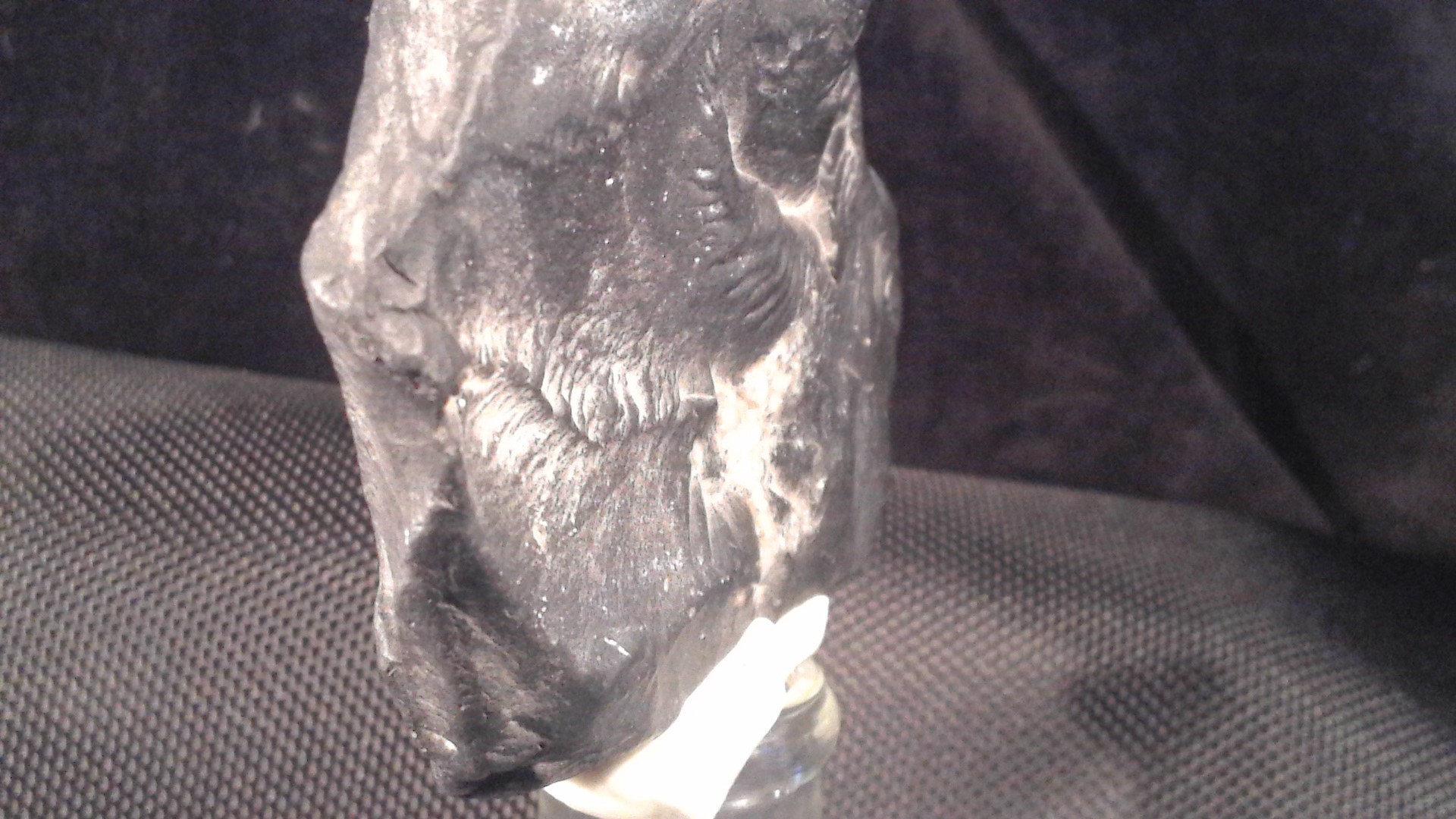
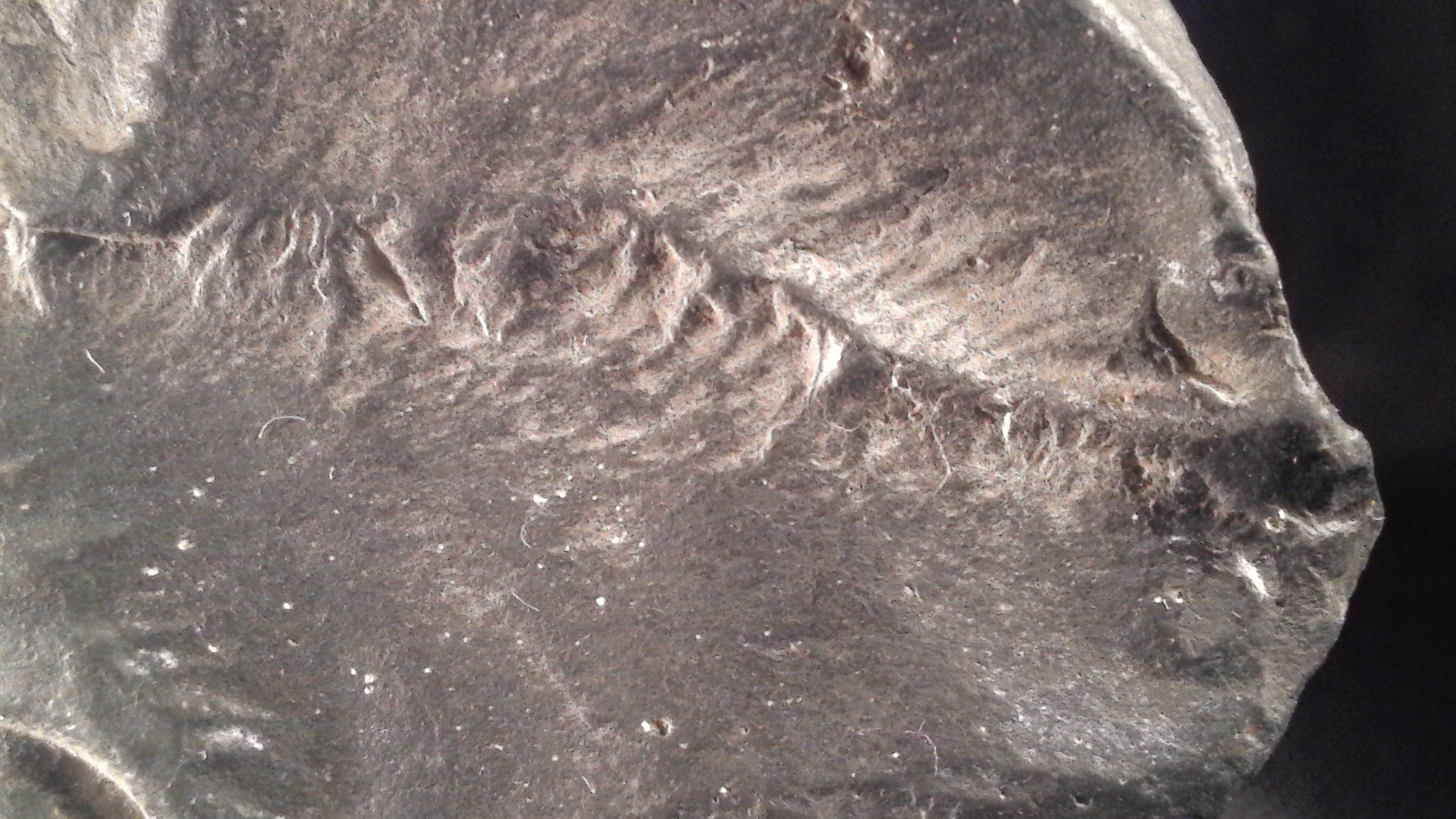
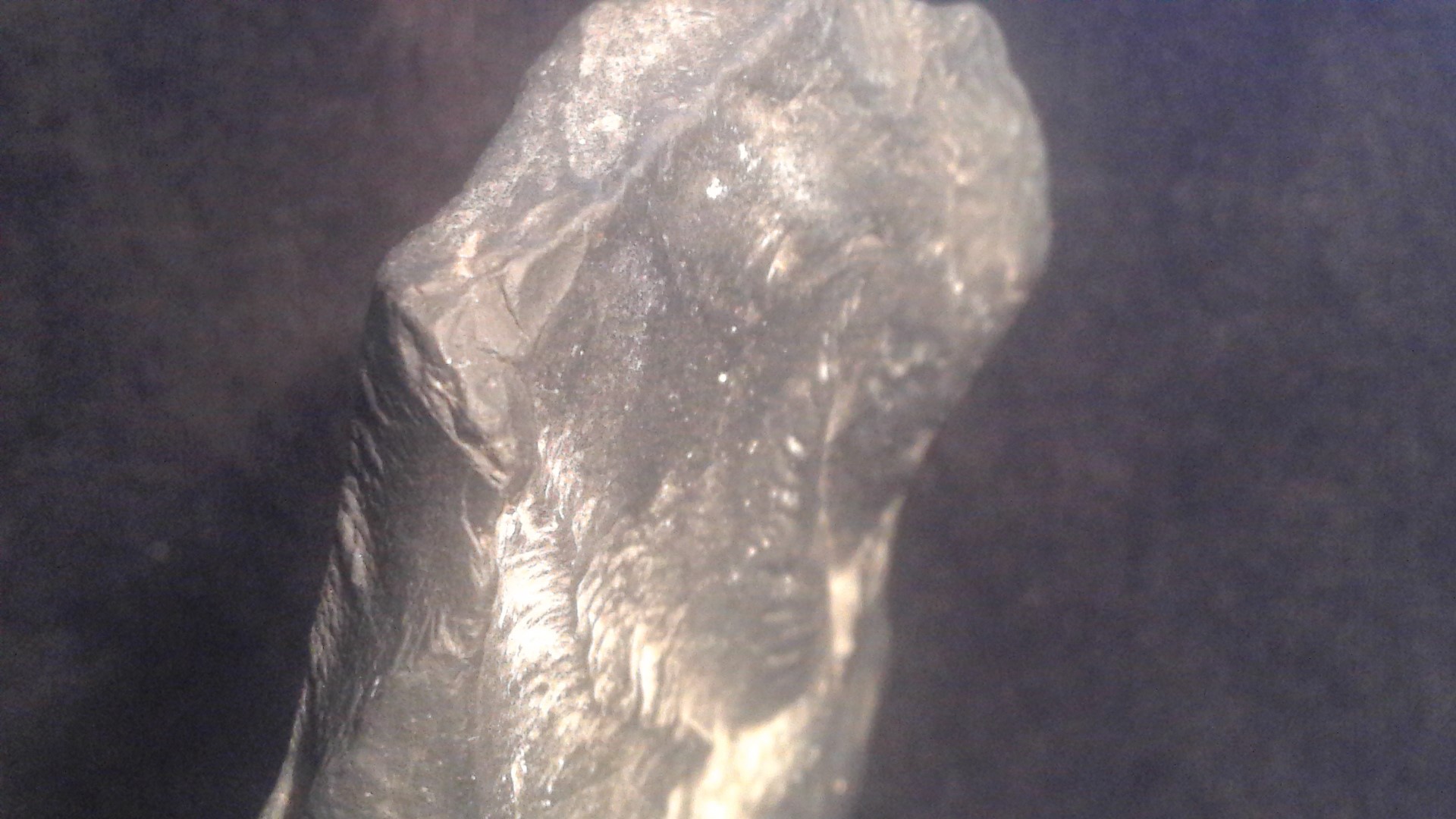
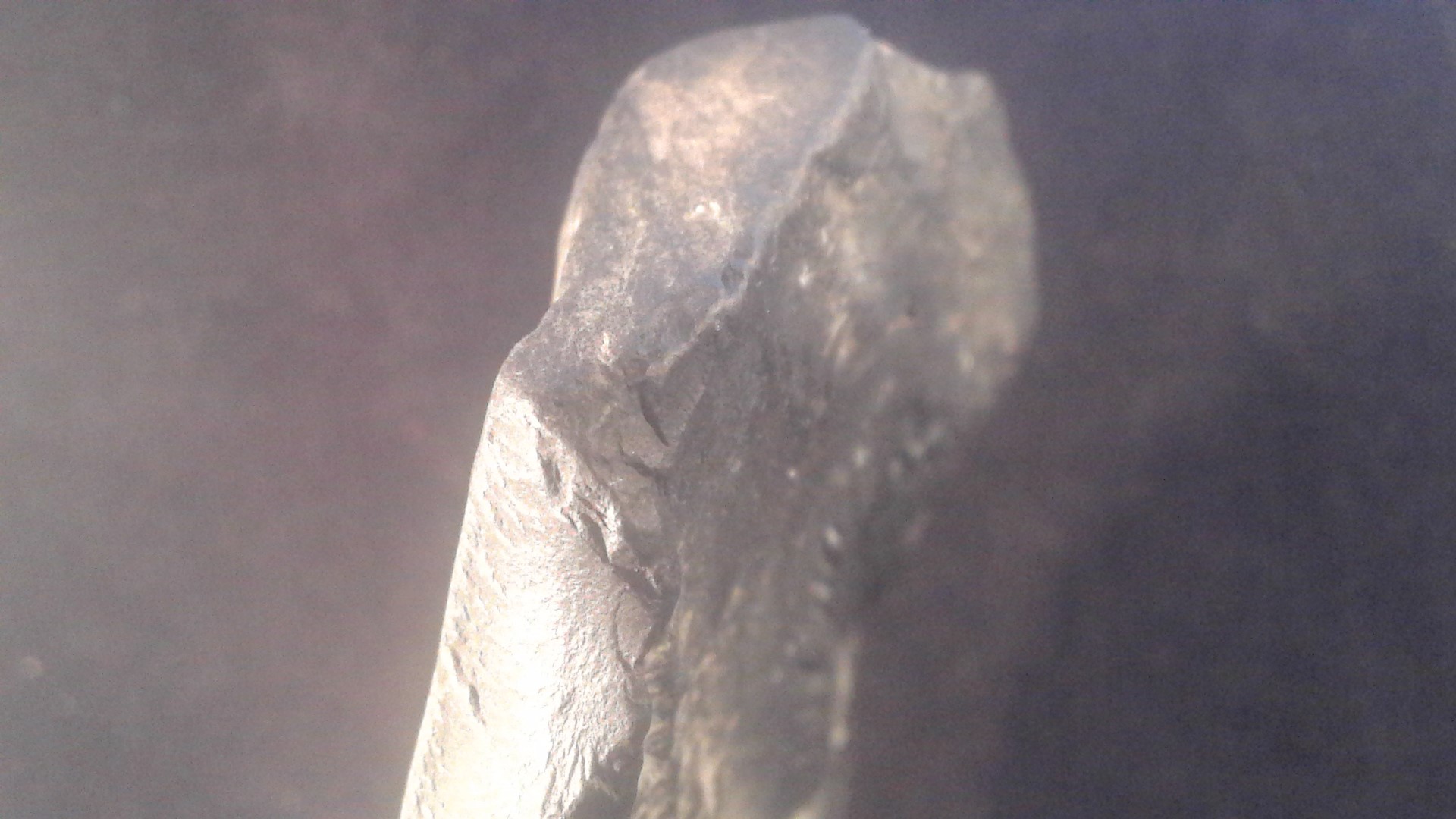
Foraminiferen < 1mm signal red -dot polyhedral shell residues
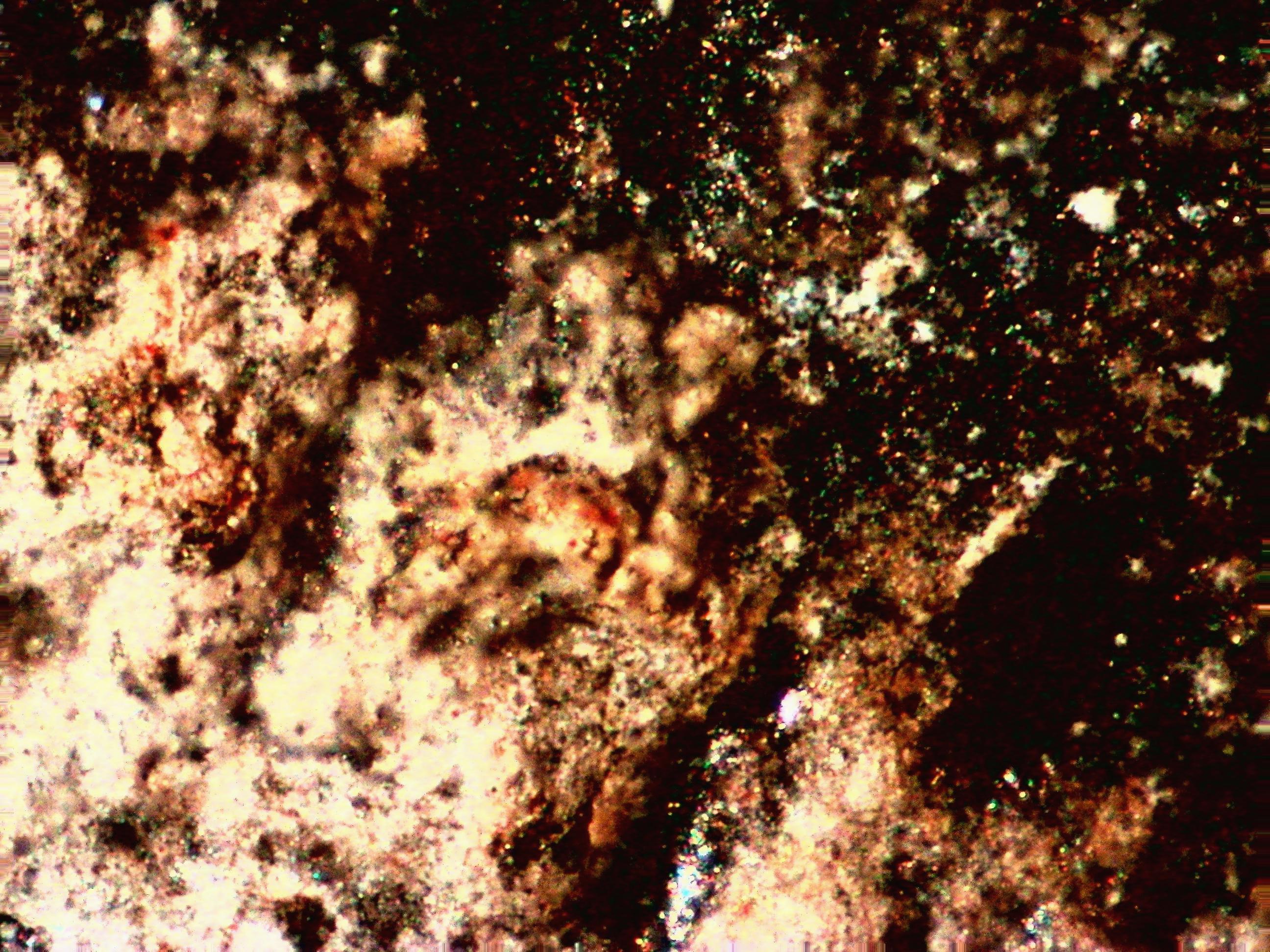
Directly above and also directly ,below 60X magnification
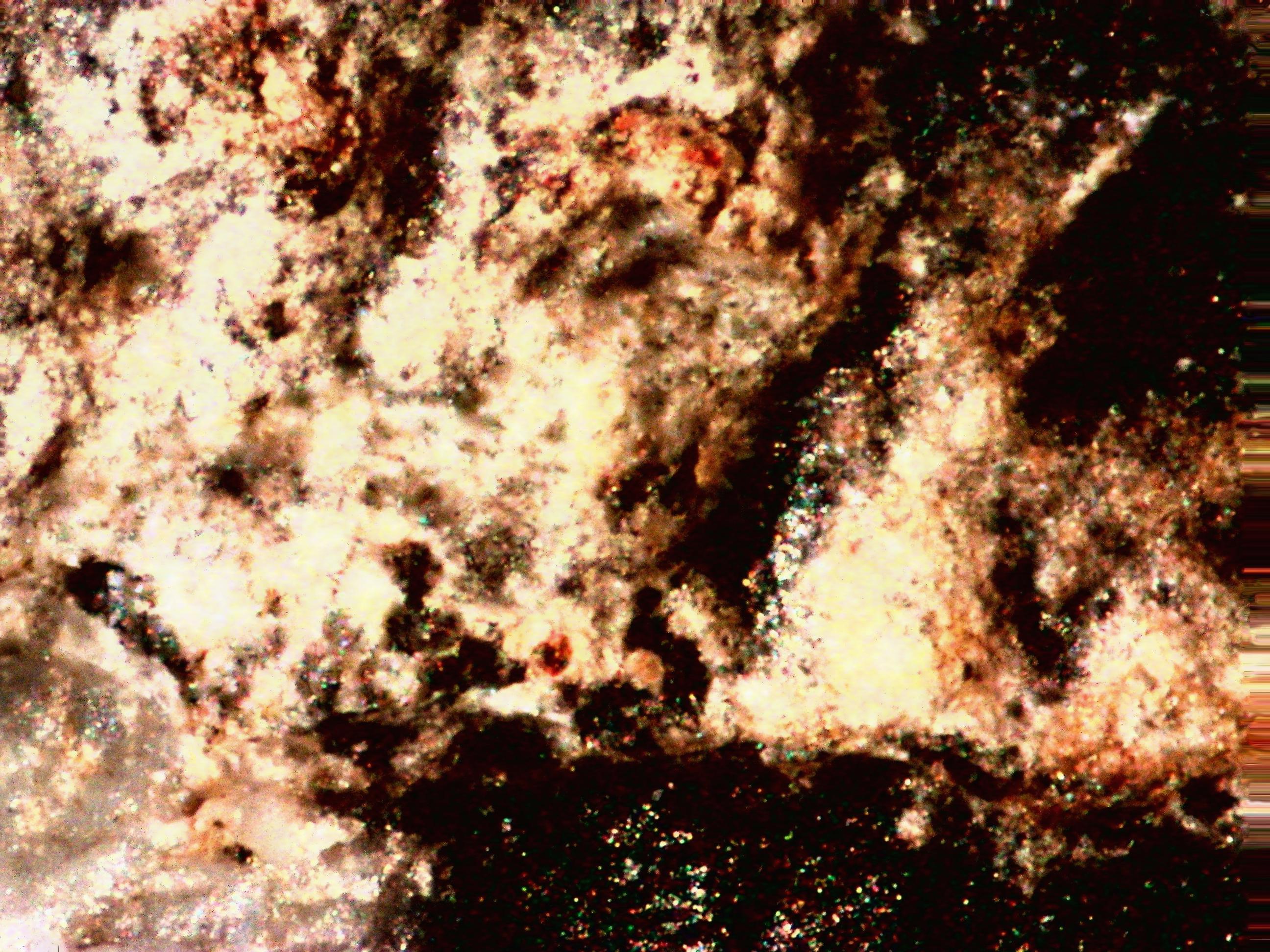

Directly above ,and below 200X magnification


Some surface layers flouresce ,in 365nm while simultaneously subjected to sodium yellow light 586.9nm (use ctrl with minus or plus - and + to get your screen resolution matching micrograph's)

The two micrographs above - again just 60 X magnification - zoomed in while web page loading ,from 60 X to somewhat higher(!) - belie the smooth texture of the bedrock ,striated tangentally at both 'ends' ,see below and following page link ( foot of this page)
Unconscionable juxtapositioning of at least 2 other wing types hint at possible quicksand plateau , rifted higher by degrees at altitude in stages,possible quicksand islands - suggesting a raised peninsula,encased in ice , ash periodocially implicating compressed rifted layers.
The transition from quicksand to ( non periodic ) ice has happened in the past within a 12 month period ,so rifting does not necessitate synchronicity of ice at altitude ,say in the alps.
While Liaoning,China is the center of research for a far larger prototype of sample , here we have an almost 1/10 adult size ,relatively complete nervous system - from head to tail-note short neck-broad head- complete preservation of visible spinal line from head to tail seen in the fotos below- rock fossil dimensions 902mm long,20mm wide at head , 7mm wide at tail,75mm from breadth above head to edge of stone ( in plan view) - which includes a 3 set series of smallest to larger ,and reverse side largest ( 3rd set ) feather breadth and length area - embedded and silouetted striations
in a bedrock - suggesting a slate/basalt base ,possible layered/ fast lava spontaneous capture of live running microraptor ( ie threat was ostensibly perceived , subject caught in mid 'flight aided run' ,not flight as legs are clearly spread at the angle of ground sprint - wings posed in a raised V (see 3rd picture below) - not spread ( lowered wings ) as if gliding (above ground) in a 4 winged tandem feather spread , visibly an attempted escape - entirely - without hyperextended 'death pose' ,while caught ..
( ice (fall) may have primarily preserved one or all of the specimin(s) while layered in fast cooling ash/lava).
This begs the question of altitude related tectonic reaction to fast moving ice formation .
Various reasons exist for pairing this Cryptovolans with it's larger (by a factor of 10) prototype.The rock it is embedded within - until carbon dated- shares compelling visual similarities with other fossil comparison samples from up to 120Ma ,that appear within same fossil on this rock's ( side view opposite microraptor's foremost right leg (4th fourth image below).This would also make the fossil home to an even smaller pterosaur , also encased in ice ,before rapid layer cooling of ash/lava
Pterosaur side view , dual extended wingline following side plane (directly below)
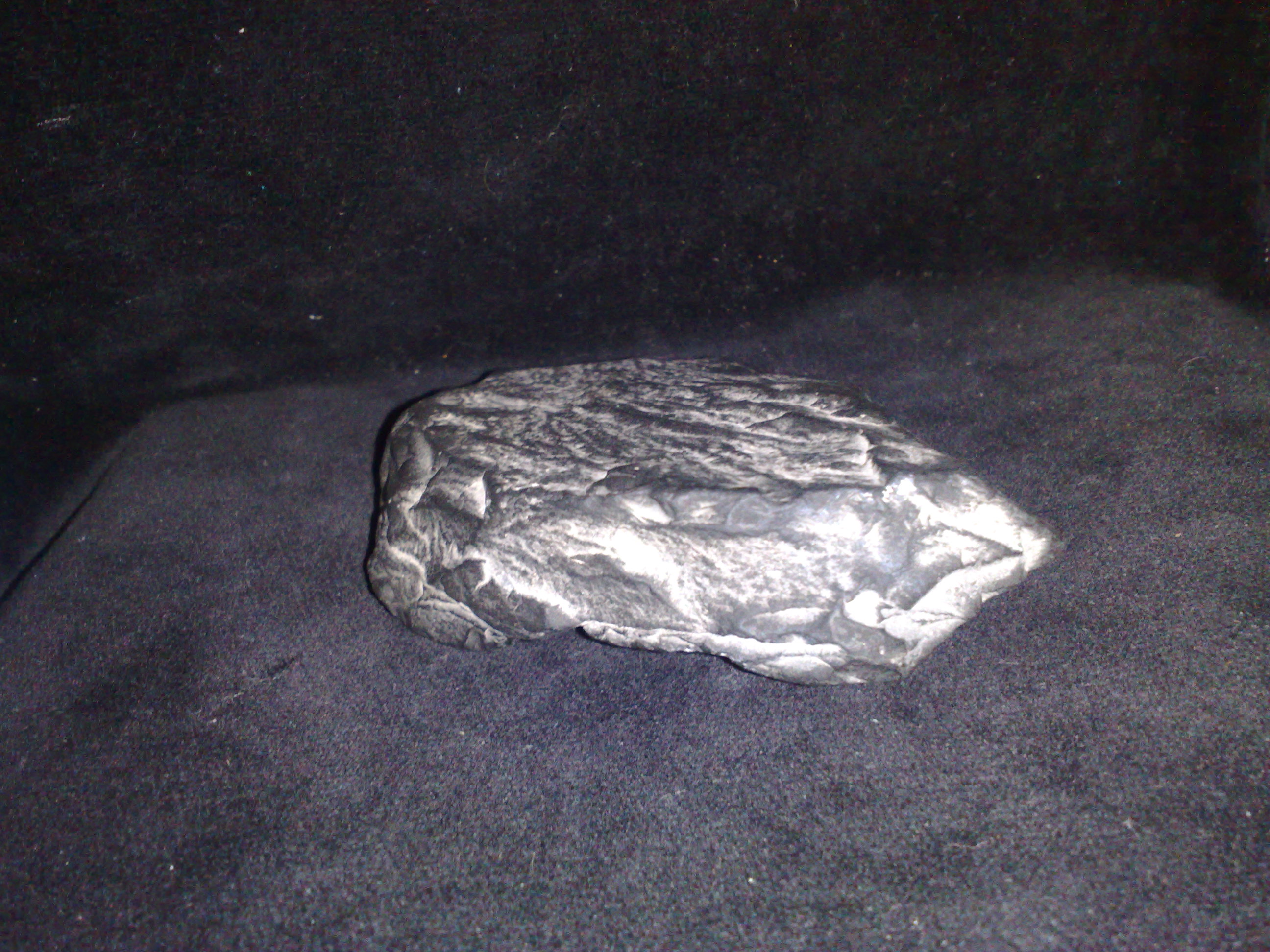
The ice encased hypothesis would also help to explain near complete feather preservation of microraptor in plan view .
The four wings (two leg wing areas) for a start.
As seen from the fotos ,one tenth the size of the microraptor -artists impression immediately below
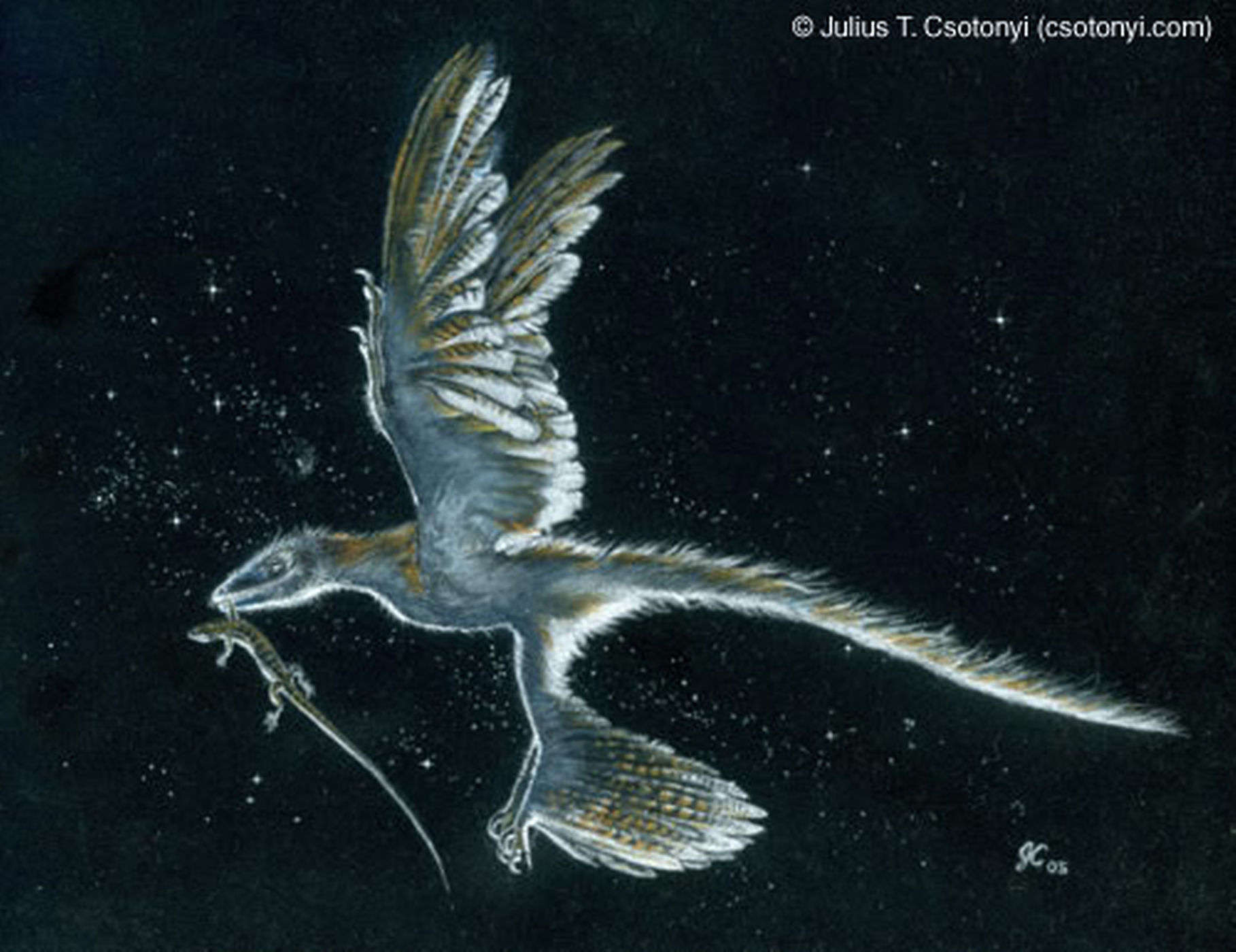
Sample below has more than four sets of wings.
The long tail - clearly visible - is both spined ,feathered ,and hairy.Intermittently calcited ,as well.
The neck is short.
the head is broad ,7-8mm at it's widest( sedimented 'outside' measurement).
The head- spinal line (seen from head - two ears - forehead 'knobble' on far right) - furthest right side edge view 3rd image immediately below) - has clear demarcation till end of first (highest ) raised wingtip
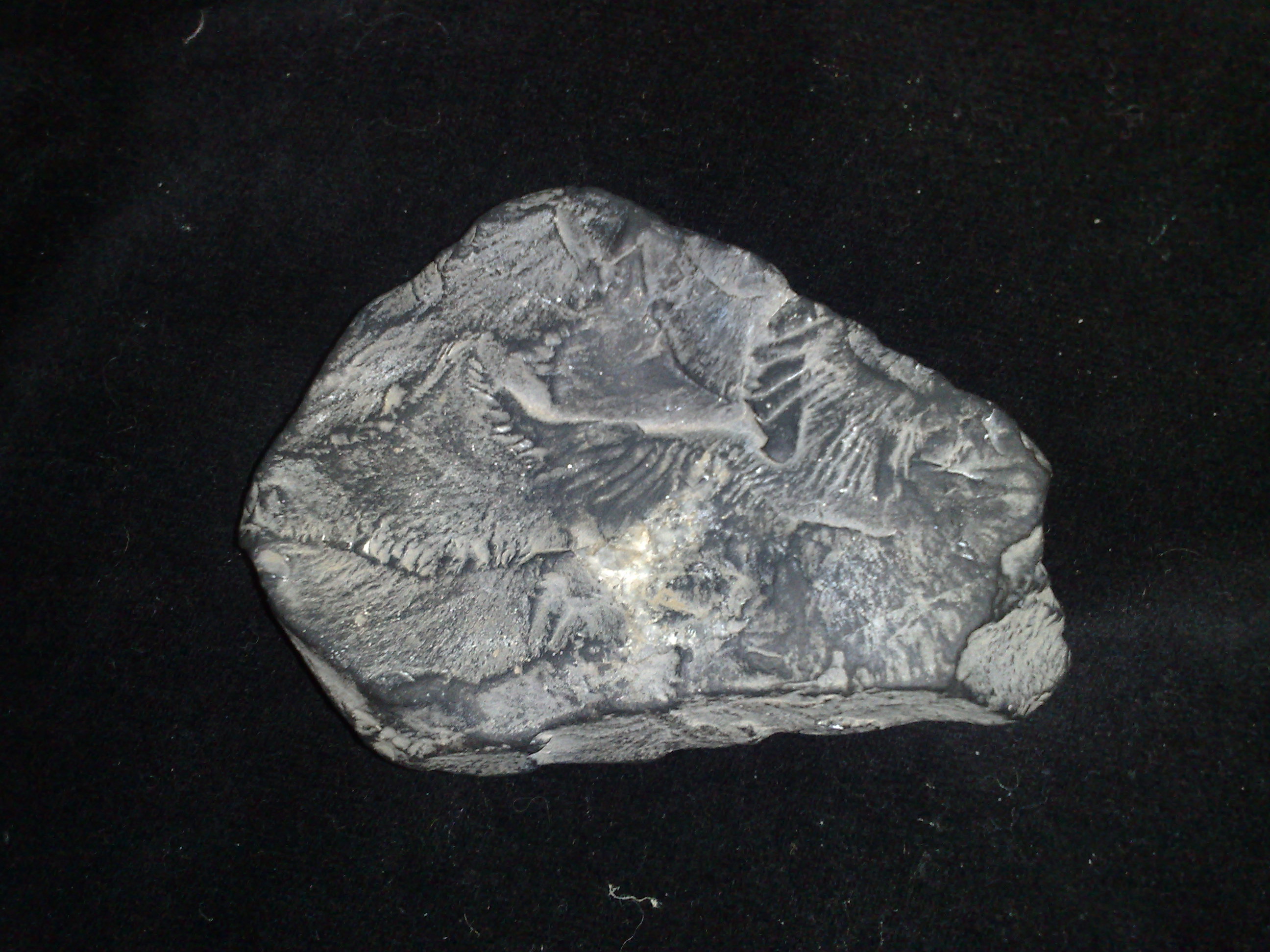
Plan view has a calcite joining mid pelvic area with legs - visible on both images (directly above) ,and directly below at a 70 degree vertical tangent from plan view ,showing attached and preserved cross section of pelvic and 'knee' 'doubling back' (tailwards) on a second tangent on edge just off bottom edge,almost exactly posterially parallel with plan view.
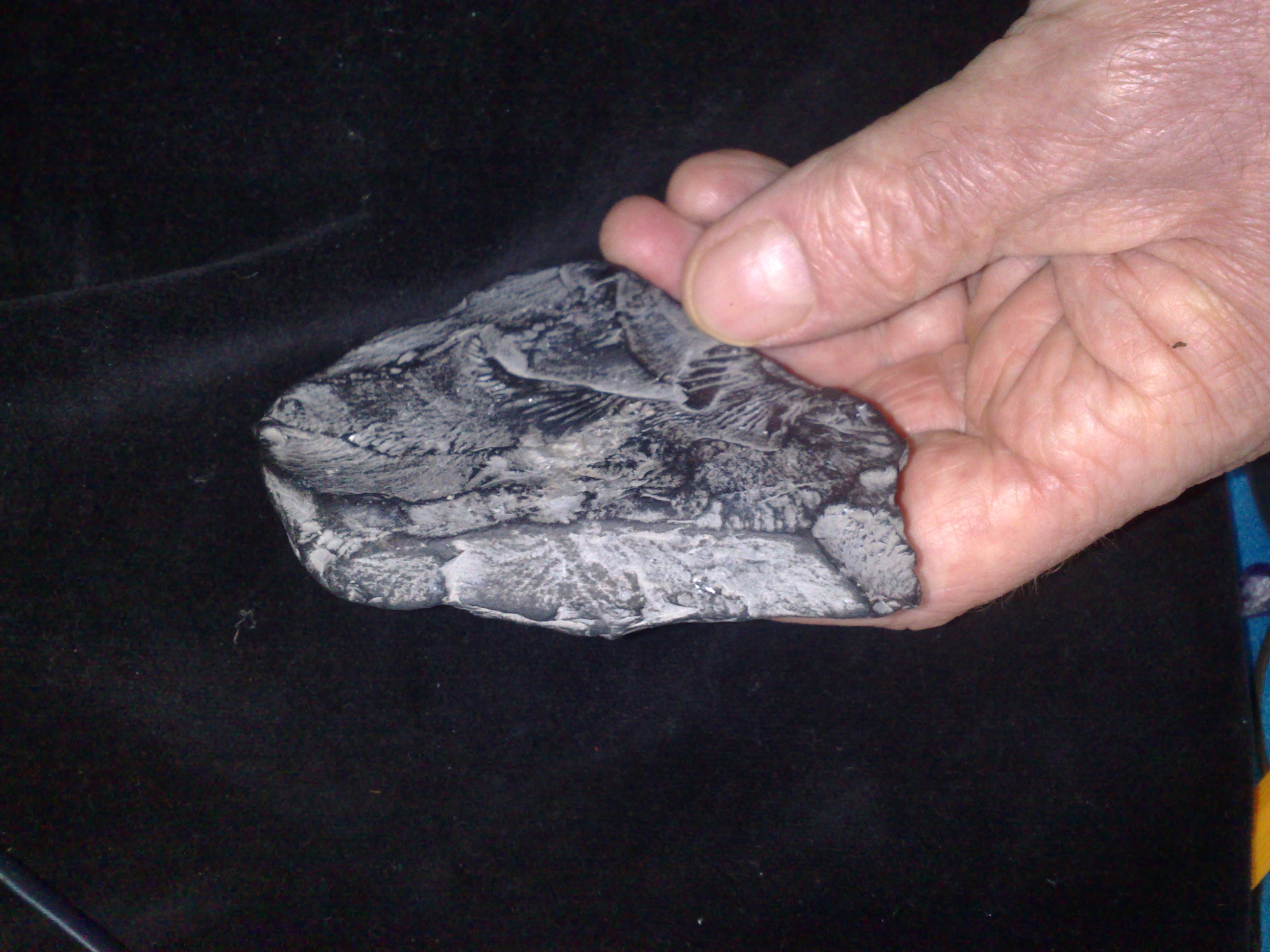
Note 2nd above (plan view) conical fan shaped extendable plume ,beginning higher up the tail.
A second ,see below, (unshared) bone structure is then visible with 5 neck vertebrae
subsequently leading to an attached 20mm pterosaur skull,clearly visible
hook beak , raised nasal ridge bone , lower jaw opened - tongue visible
Pterosaur (profile view directly below ) pinion of larger wing with feathers appears between joints 2 and 3
rising and collapsing backwards ,along reverse side of stone ,as if compressed unexpectedly.
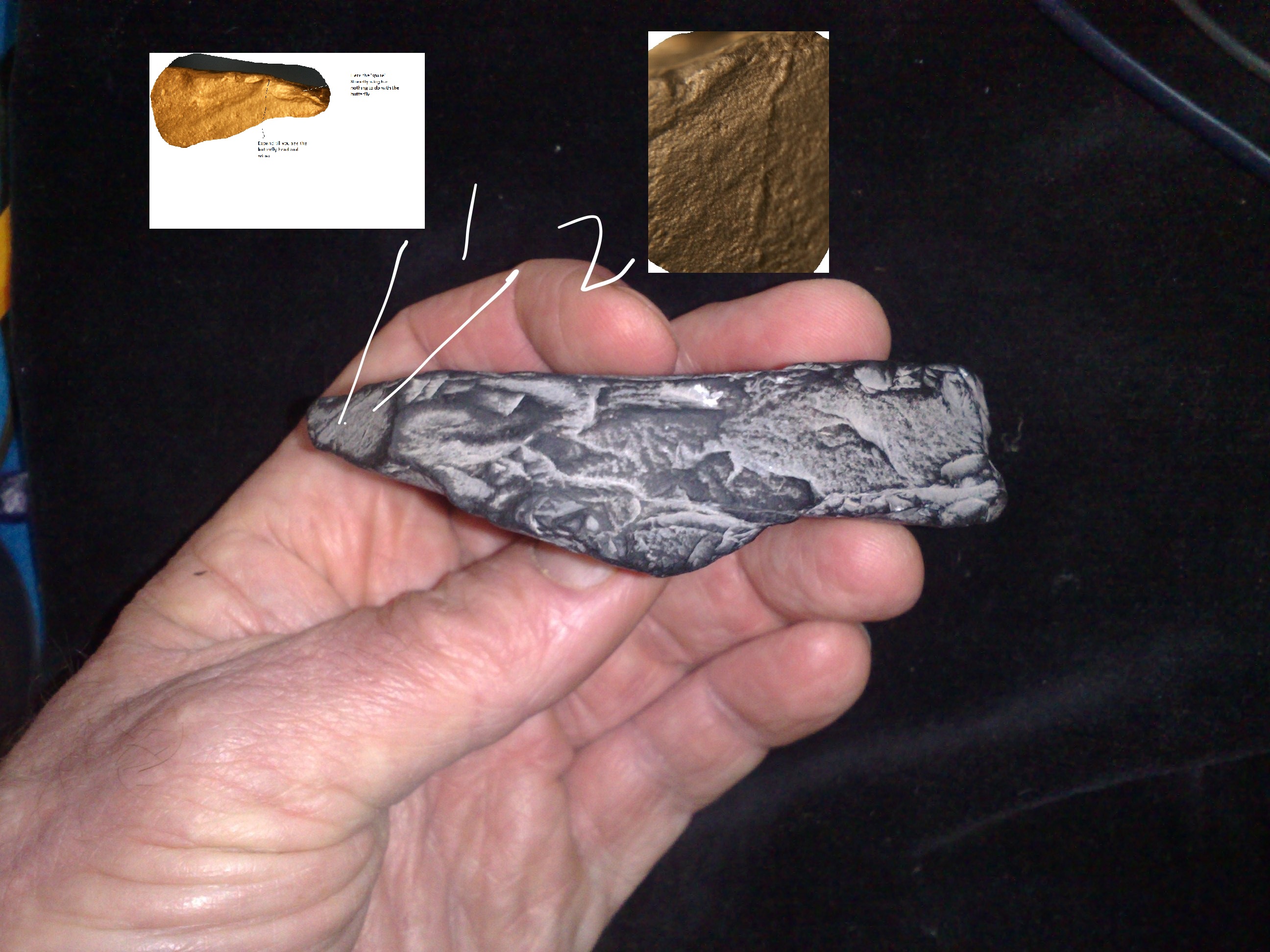
Both skulls are thus at opposite sides of the fossil complex ( opposite direction to first mentioned mini microraptor's (7-8mm broad) head )
The reverse plan view has a possible third set of indentations /striations - from a third wing ,pinioned perhaps just beyond where the primary fossil's (mraptor) tail ,ends.
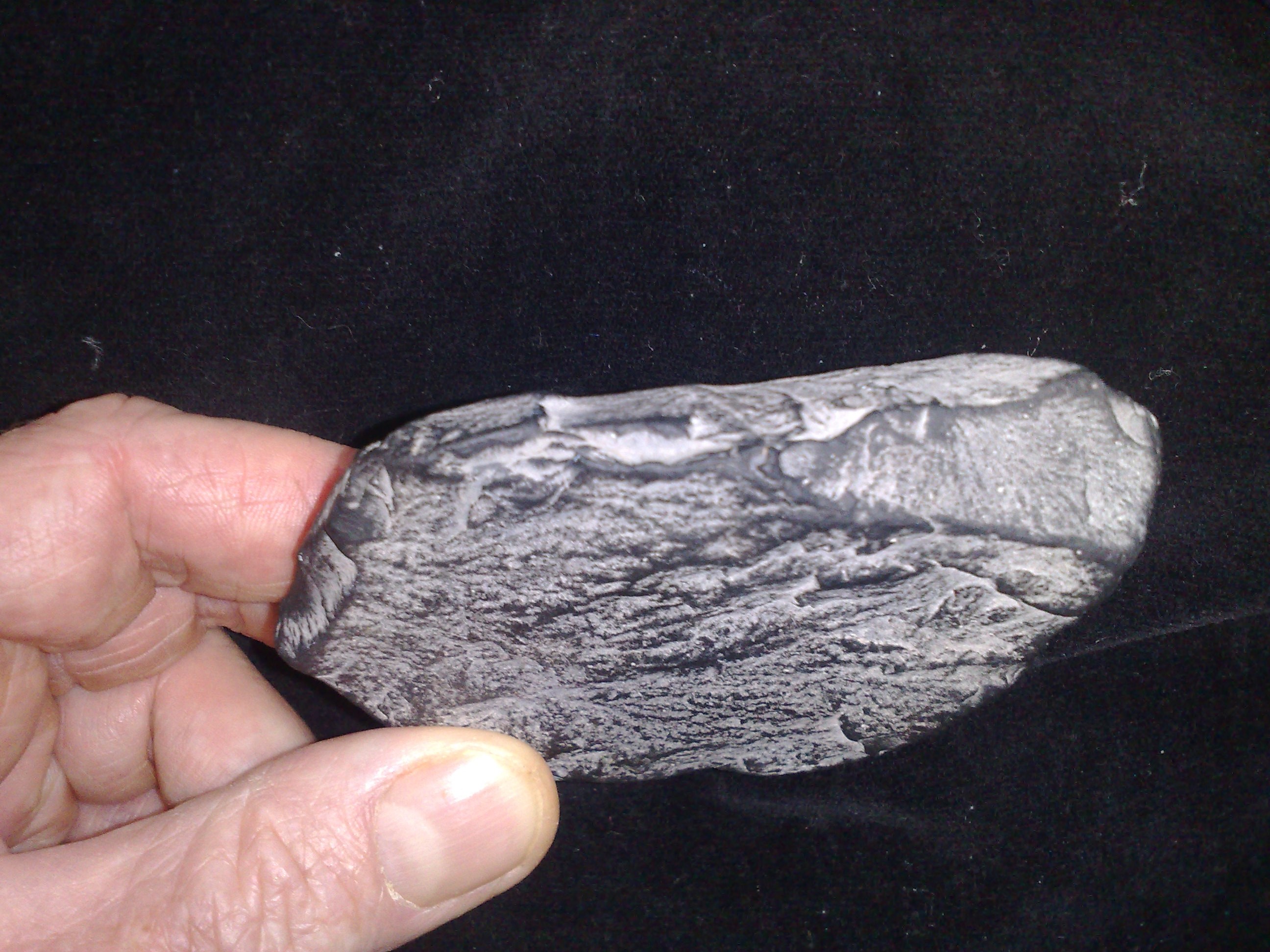
The (directly ) above may be a 3rd wing ,pinioned from an invisible source just beyond the plan view microraptor's tail
A better understanding of how complex the complete sample is (see below) , with more than four sets of wings (sample above and below,for detail please expand with " Ctrl and + ") ,superior and posterior (on reverse side of rock) - from primary preserved main lava smaller sample,is needed .
The alternative set of wings and feet ( a third striation series on reverse side of rock, hinting at not less than three possible fossil wing sizes) are even larger ,having a more pronounced feather profile - belonging either to one or more developed peer species ,(alternatively another pursuer) ,dually and triply overtaken by the velocity of swiftly cooling lava.

The 'mini ' microraptor's comparitive lack of hyperextension is perhaps primarily attributable to being the object of pursuit 'as prey' ,as the broad headed smaller 'runner' was captured in rock as if having succeeded in primary objective ,ie to outrun.The profile of feather size on opposite ( to plan view) ,reverse side of rock may support this.
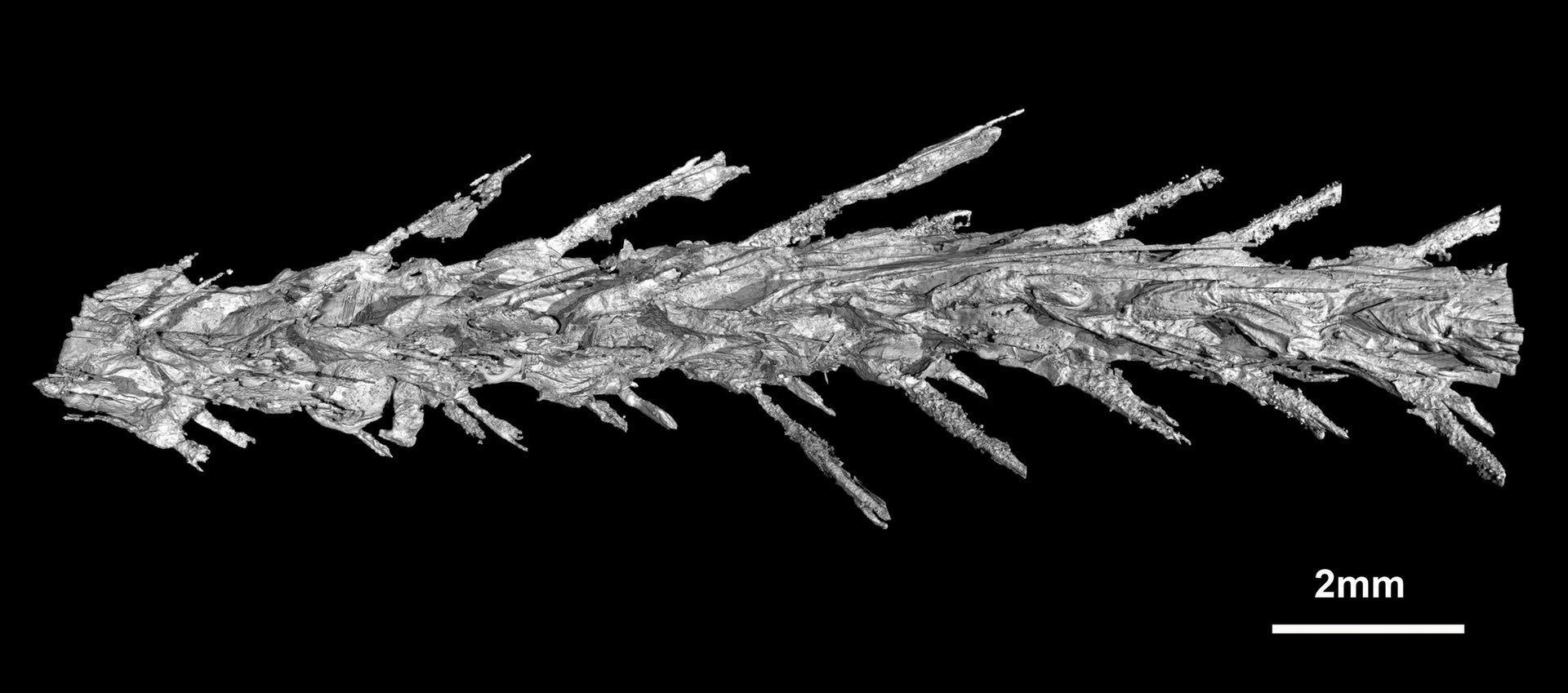 The above synchrotron 3rd image is for comparison only - as it hails from a putative juvenile coelurosaur mid cretaceous period amber encased ( as opposed to ice encased- ash enveloped),matchstick long.
The above synchrotron 3rd image is for comparison only - as it hails from a putative juvenile coelurosaur mid cretaceous period amber encased ( as opposed to ice encased- ash enveloped),matchstick long. Page 2- Still More detailed fossil images
 The above synchrotron 3rd image is for comparison only - as it hails from a putative juvenile coelurosaur mid cretaceous period amber encased ( as opposed to ice encased- ash enveloped),matchstick long.
The above synchrotron 3rd image is for comparison only - as it hails from a putative juvenile coelurosaur mid cretaceous period amber encased ( as opposed to ice encased- ash enveloped),matchstick long.